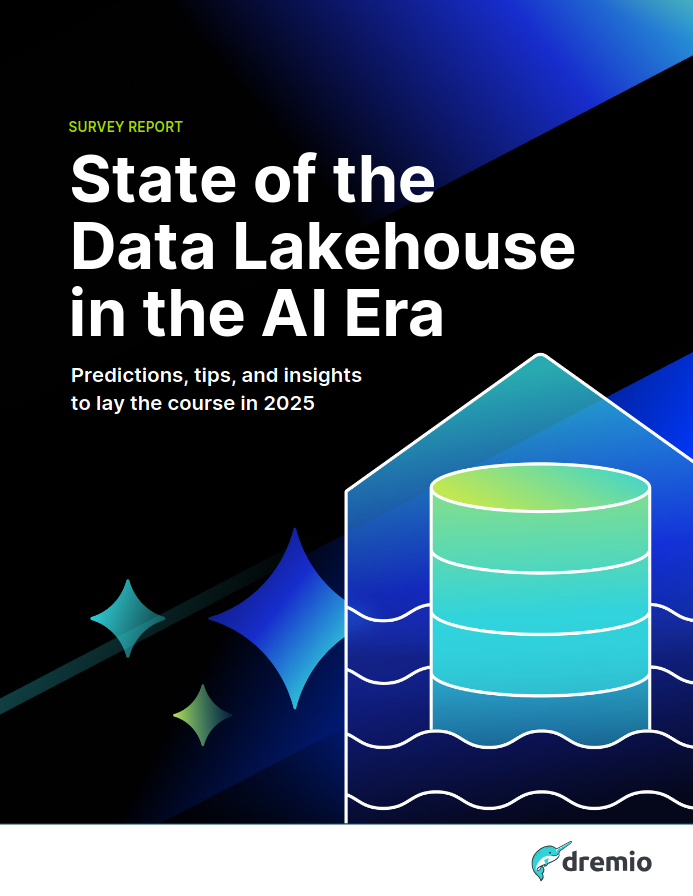State of the Data Lakehouse in the AI Era – Report Review

Report Name: State of the Data Lakehouse in the AI Era
Published by: Dremio
Publication Date: Q4 2024
Pages: ~10
Rating: 4.5/5
Review
I recently read the State of the Data Lakehouse in the AI Era, a comprehensive industry report analyzing the rapid adoption of data lakehouses and their role in the AI-driven enterprise landscape. This report is based on a survey of 563 IT decision-makers across multiple industries in the U.S. and provides key insights into data architecture trends, challenges, and future predictions.
This is a must-read for IT leaders, data engineers, and analytics professionals who want to stay ahead in the evolving AI era. However, while it provides strong strategic insights, some deeper implementation details could have made it even more actionable—hence my 4.5-star rating instead of a full 5.
What Makes This Report Valuable?
The report highlights the growing dominance of data lakehouses as enterprises move away from traditional data warehouses and legacy data lakes. Some of the most striking findings include:
- Mainstream Adoption: 55% of organizations currently run the majority of their analytics on data lakehouses, projected to reach 67% within three years.
- AI-Driven Lakehouse Usage: 85% of organizations are using their lakehouses for AI model development, with another 11% planning to do so soon.
- Cost & Efficiency Priorities: The top three drivers for adoption are:
- Cost efficiency (19%)
- Unified data access (17%)
- Ease of use (17%)
- Migration Trends: 41% of organizations migrated from cloud data warehouses, while 23% modernized from legacy data lakes—showing a clear shift in enterprise data strategies.
One of the most compelling takeaways is how AI-ready data is now a strategic focus. Organizations are formalizing their data product strategies (65%) and investing in governance, metadata management, and self-service analytics to support AI-driven innovation.
Where It Could Be Improved
While the report delivers great insights, there are a few areas where it could have gone deeper:
-
More Practical Guidance on AI-Ready Data:
The report acknowledges the challenges of preparing AI-ready data (like governance, security, and complexity), but it does not provide step-by-step solutions for organizations to overcome these hurdles. A detailed best practices section or case study breakdowns could have added more value. -
More Coverage on Tooling & Implementation:
The report mentions technologies like Apache Iceberg and open metadata solutions, but it does not dive into the technical architecture or implementation strategies. Some organizations may find this high-level view insufficient for hands-on execution.
Key Takeaways for Organizations
For enterprises looking to adopt or optimize their data lakehouse strategy, the report suggests three major focus areas:
- Invest in AI-Ready Data Governance:
- 36% of organizations struggle with AI data security and governance—highlighting the need for robust compliance frameworks.
- Organizations should build structured, machine-readable metadata to ensure AI models operate on reliable, high-quality datasets.
- Balance Cost Efficiency with Performance:
- Many organizations (19%) prioritize cost efficiency, but ignoring performance can lead to bottlenecks in AI workloads.
- The report suggests using autonomous scaling and query optimization to ensure AI and analytics workloads run efficiently.
- Enable Self-Service Analytics—But Solve Governance First:
- While 80% of enterprises aim for self-service analytics, 42% cite security concerns as a major barrier.
- The key to success is combining governance with accessibility, using structured workflows and automation.
Final Verdict
If you’re a data leader, AI strategist, or enterprise architect, this report is a must-read. It provides a crystal-clear overview of the industry shift toward AI-powered data lakehouses and offers data-driven insights into adoption trends, challenges, and best practices.
However, if you’re looking for in-depth technical implementation details, you may need to supplement this with additional resources on data lakehouse architectures, governance frameworks, and tooling.
Final Rating: ⭐⭐⭐⭐⭐ (4.5/5) – Highly insightful, but could benefit from more hands-on depth. 🚀
LEAVE A COMMENT
Comments are powered by Utterances. A free GitHub account is required. Comments are moderated. Be respectful. No swearing or inflammatory language. No spam.
I reserve the right to delete any inappropriate comments. All comments for all pages can be viewed and searched online here. To edit or delete your comment: click the "Comments" link at the top of the comments section below where it says how many comments have been left (this will take you to a GitHub page with all comments for this page) --> find your comment on this GitHub page and click the 3 dots in the top-right --> click "Edit" or "Delete". Editing or adding a comment from the GitHub page also gives you a nicer editor.